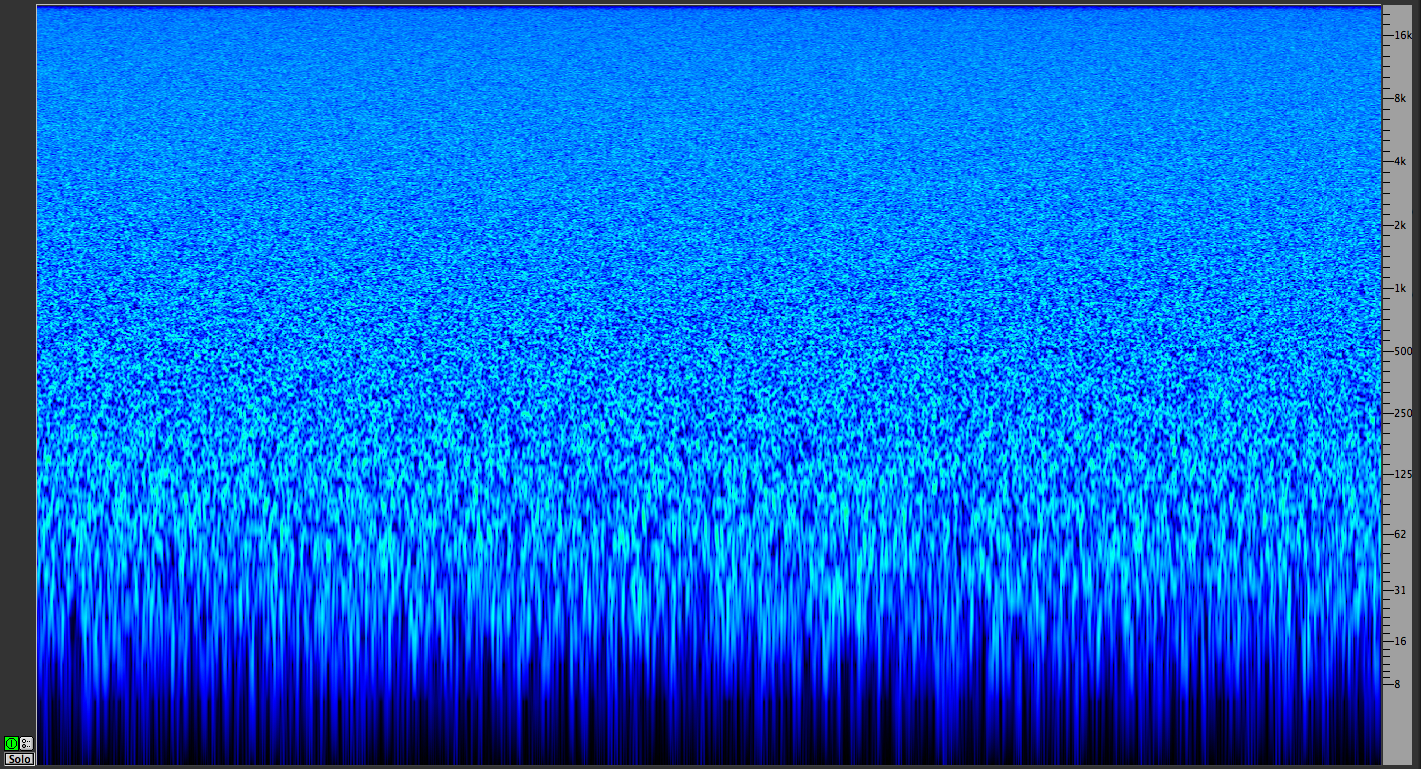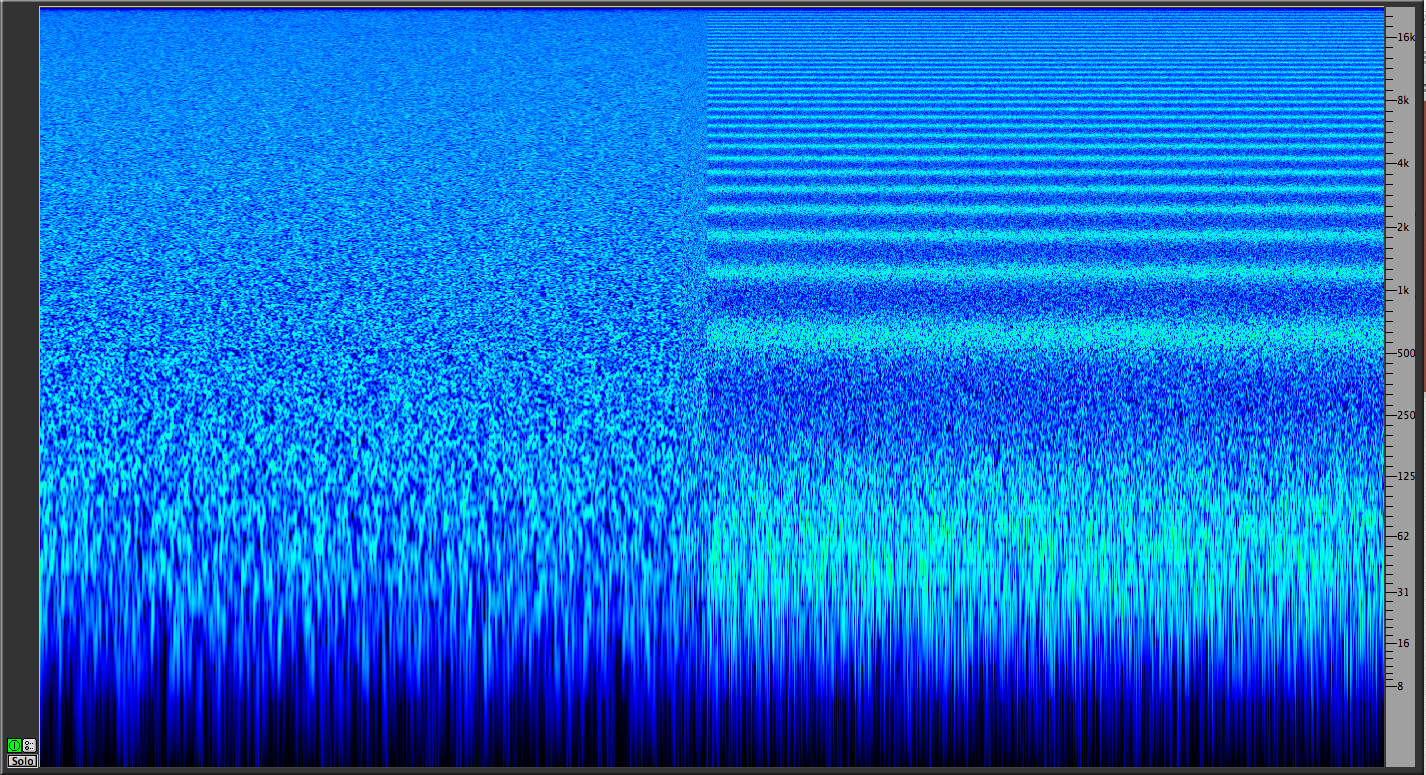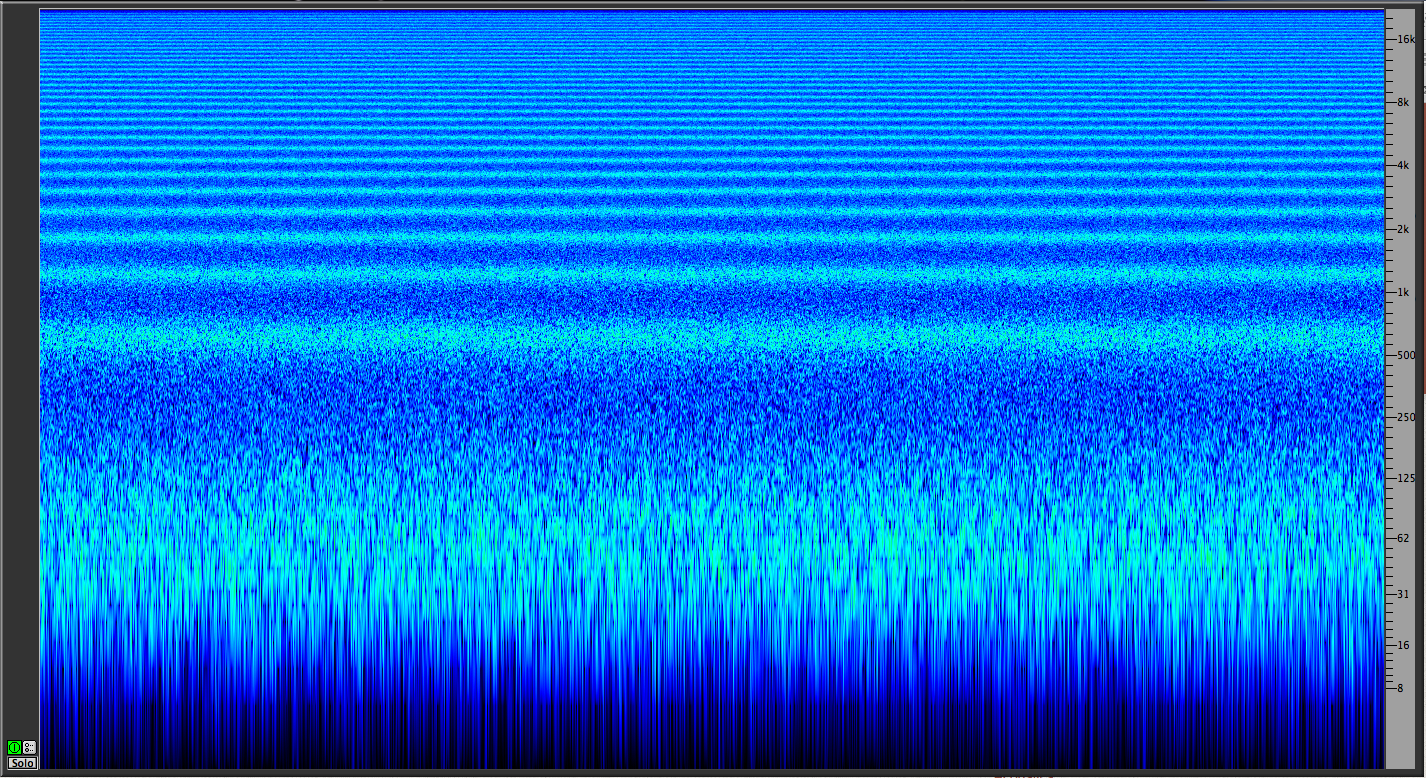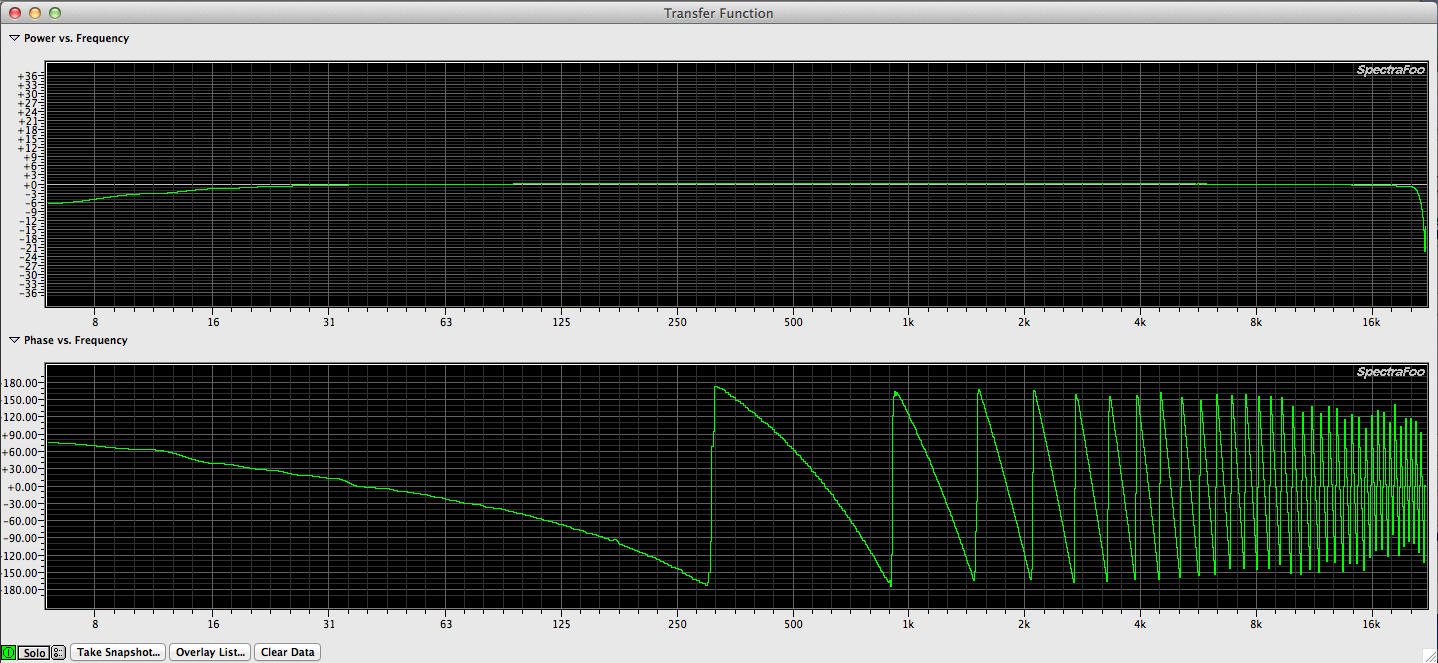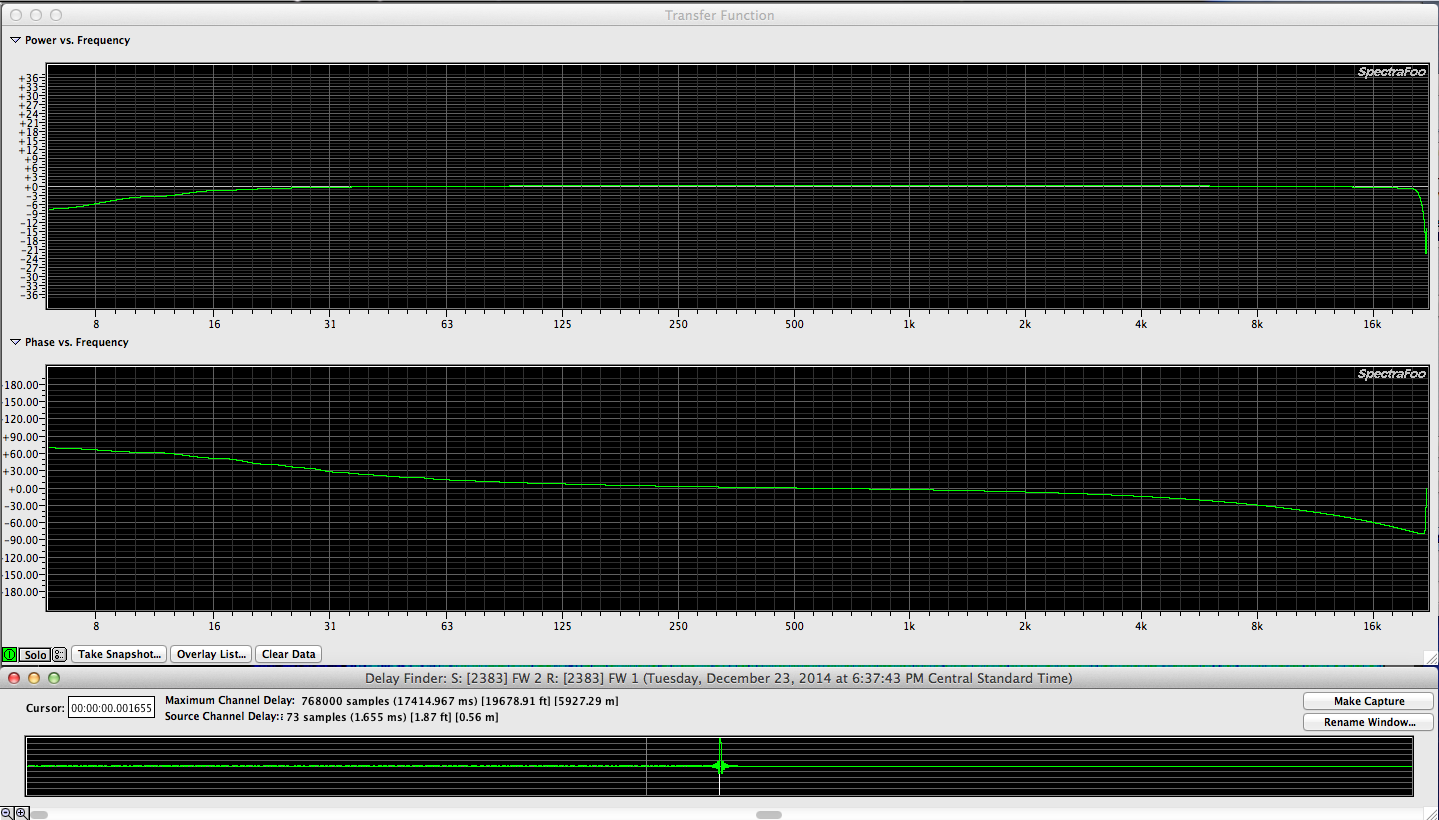I just discovered a bad gain pot on one of my consoles and I thought I would see if I could see anything by passing pink noise audio through the channel as I move the pot. Dirt maybe. What does a dirty pot spew out when you move it?
I was hoping to find out but I ultimately learned that the pot has a dead spot.
This is what pink noise looks like leaving my Metric Halo 2882, going into the LINE INPUT of my Midas Venice and returning to the Metric Halo 2882 via the console DIRECT OUT. Pretty much textbook pink noise.
If I have two paths for the signal to follow (one virtual path inside the box and one that passes out of the 2882 into another device and comes back again) there will obviously be latency between those two signals.
This is a screen shot of what happens when I combine those (2) signal at the spectragram instrument input. I unmuted the internal signal part way through the screen capture.
Here we see what happens when two signal arriving out of time with each other combine. In this case the latency between signals is 73 sample / 1.655ms / 1.87 ft / .56 m.
Of special interest is the first cancellation at around 250hz. This could be expected once we know the latency between the signals is 1.655ms.
Here is a transfer function view of the same measurement. Note the phase trace starting at around 250hz.
This screen capture shows the delay time between signals.
Comb filter in the electronic or acoustic realm is best avoided whenever possible.


